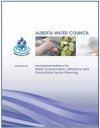Water Connections – Gateway to Canada’s Water Information
Water Connections is a program designed to realize the Centre for Sustainable Watersheds' vision of a national water information resource that will facilitate cooperation and collaboration among Canada's water community. Our mission is to develop and implement a web-based water information portal designed to provide users with centralized access to a nationwide collection of water data, resources, contacts and other pertinent information.









